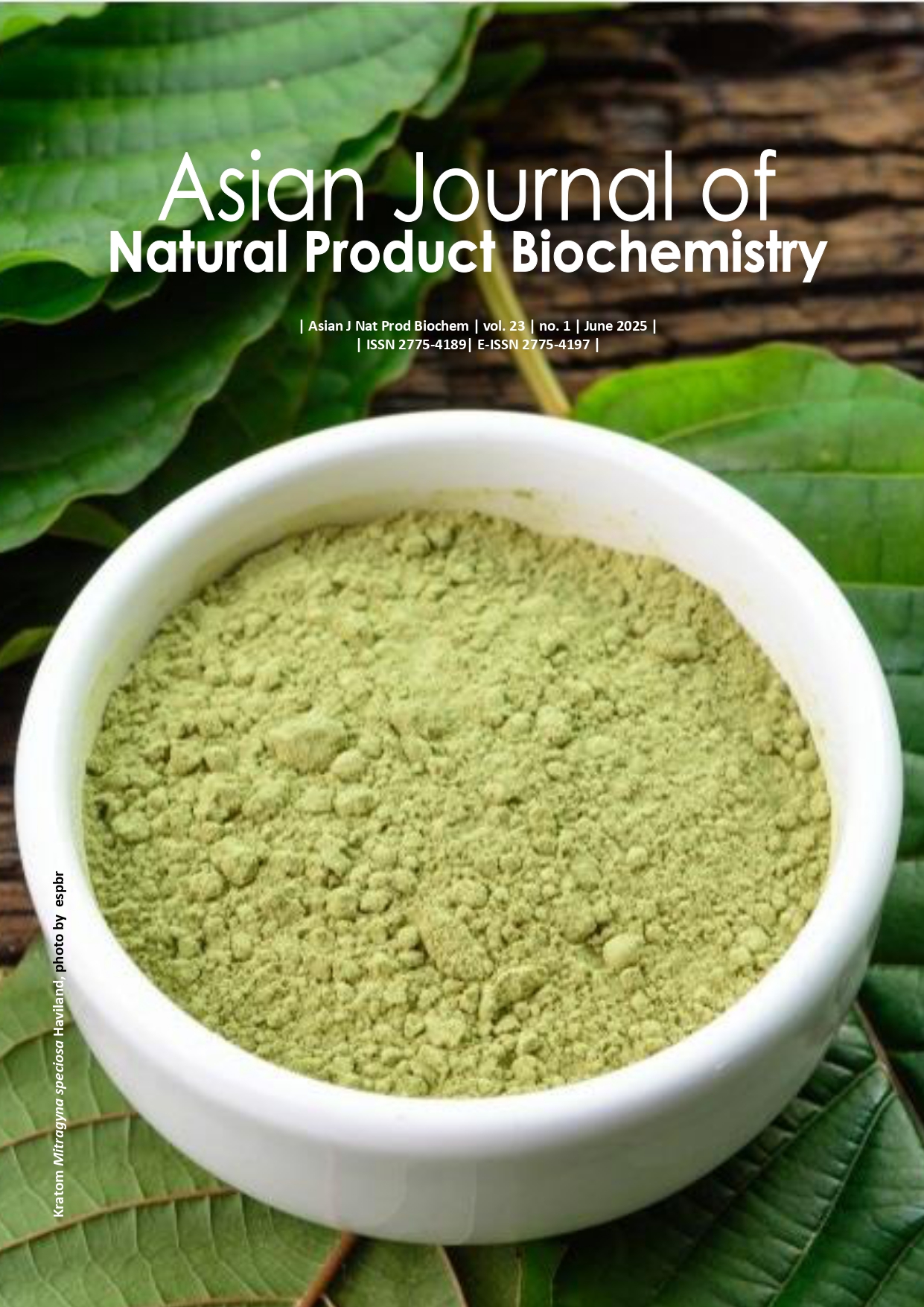Chitosan nanoparticles encapsulating turmeric (Curcuma longa) extract for the management of Streptococcus agalactiae-associated breast cancer
##plugins.themes.bootstrap3.article.main##
Abstract
Abstract. Ukwubile CA, Menkiti ND, Otalu Jr O. 2023. Chitosan nanoparticles encapsulating turmeric (Curcuma longa) extract for the management of Streptococcus agalactiae-associated breast cancer. Asian J Nat Prod Biochem 23: 19-26. Breast cancer associated with Streptococcus agalactiae Lehmann & Neumann, 1896 infection poses complex therapeutic challenges, often exacerbating inflammatory responses and impacting tumor progression. Despite the use of various anticancer drugs, the development of resistance by cancer cells against these is still prevalent, hence, the need for an appropriate drug delivery strategy in the form of chitosan nanoparticles for effective treatment against breast cancer. This study investigates the antibacterial and anticancer effects of turmeric (Curcuma longa L.) extract encapsulated in chitosan nanoparticles (NPs) against S. agalactiae-associated breast cancer, assessing its influence on key bacterial and cancer biomarkers. Curcuma longa extract-loaded chitosan NPs were synthesized via ionic gelation and characterized for stability and particle size. Breast cancer cells and S. agalactiae cultures were treated with these NPs, and bacterial growth inhibition assays quantified antibacterial activity. Anticancer effects were evaluated using cell viability assays and measurements of inflammatory and oxidative stress biomarkers, including Tumor Necrotic Factor-alpha (TNF-a), interleukin-1beta (1L-1B), cyclooxygenase-2 (COX-) and Reactive Oxygen Species (ROS) levels. Curcuma longa-loaded chitosan NPs exhibited a significant antibacterial effect, reducing S. agalactiae counts by 87% compared to the control (p < 0.01). In cancer cells, the NPs decreased TNF-? and IL-1? levels by 52% and 48%, respectively, and significantly reduced COX-2 expression by 43% (p < 0.01). Additionally, ROS levels in treated cancer cells were reduced by 60% compared to control, highlighting the potent antioxidative activity of the NPs. These findings demonstrated the enhanced therapeutic potential of C. longa-loaded chitosan NPs for combating infection-associated breast cancer. The encapsulation of C. longa extract in chitosan NPs significantly improves antibacterial and anticancer activities, offering a dual-targeted approach that holds promise for treating S. agalactiae-associated breast cancer.
